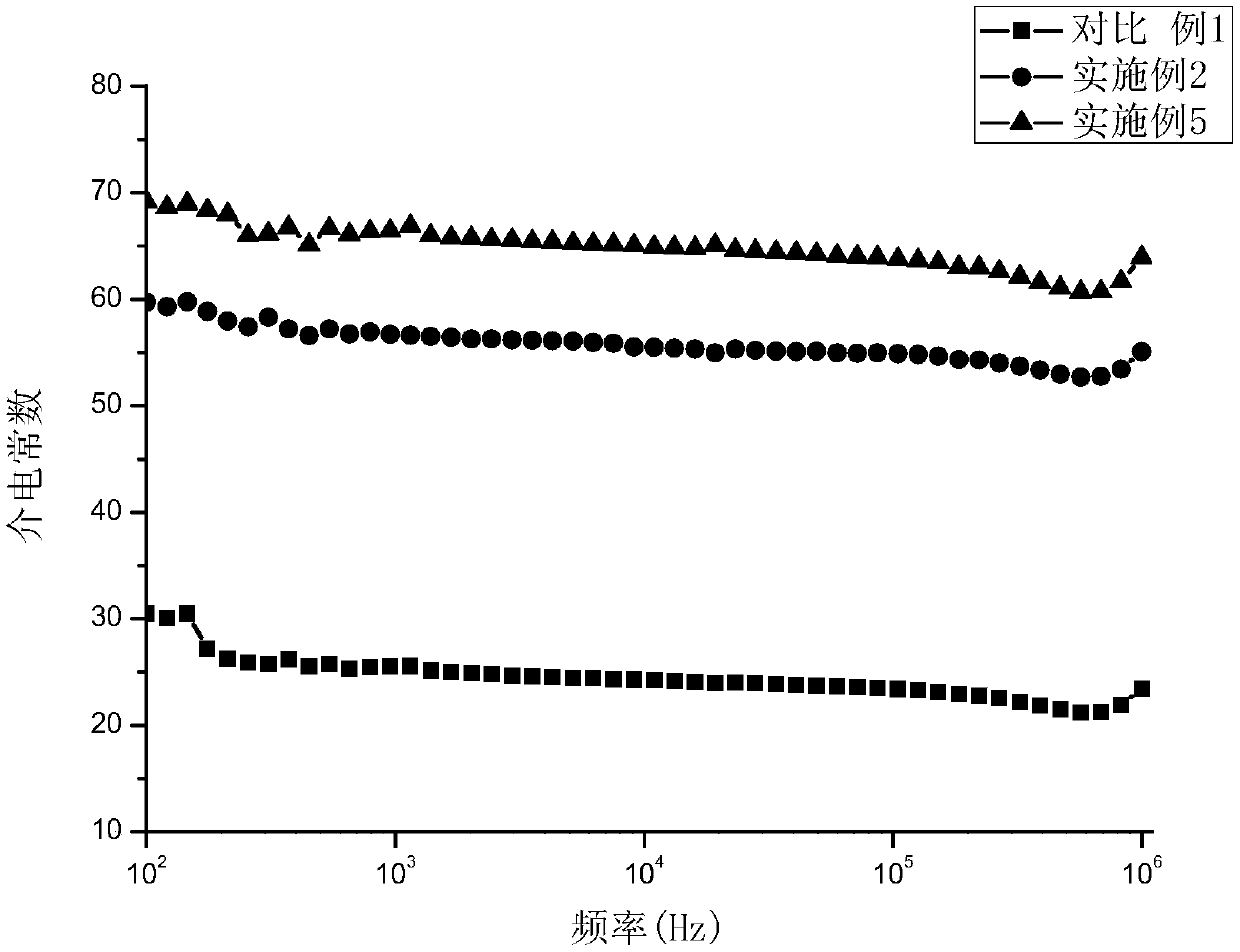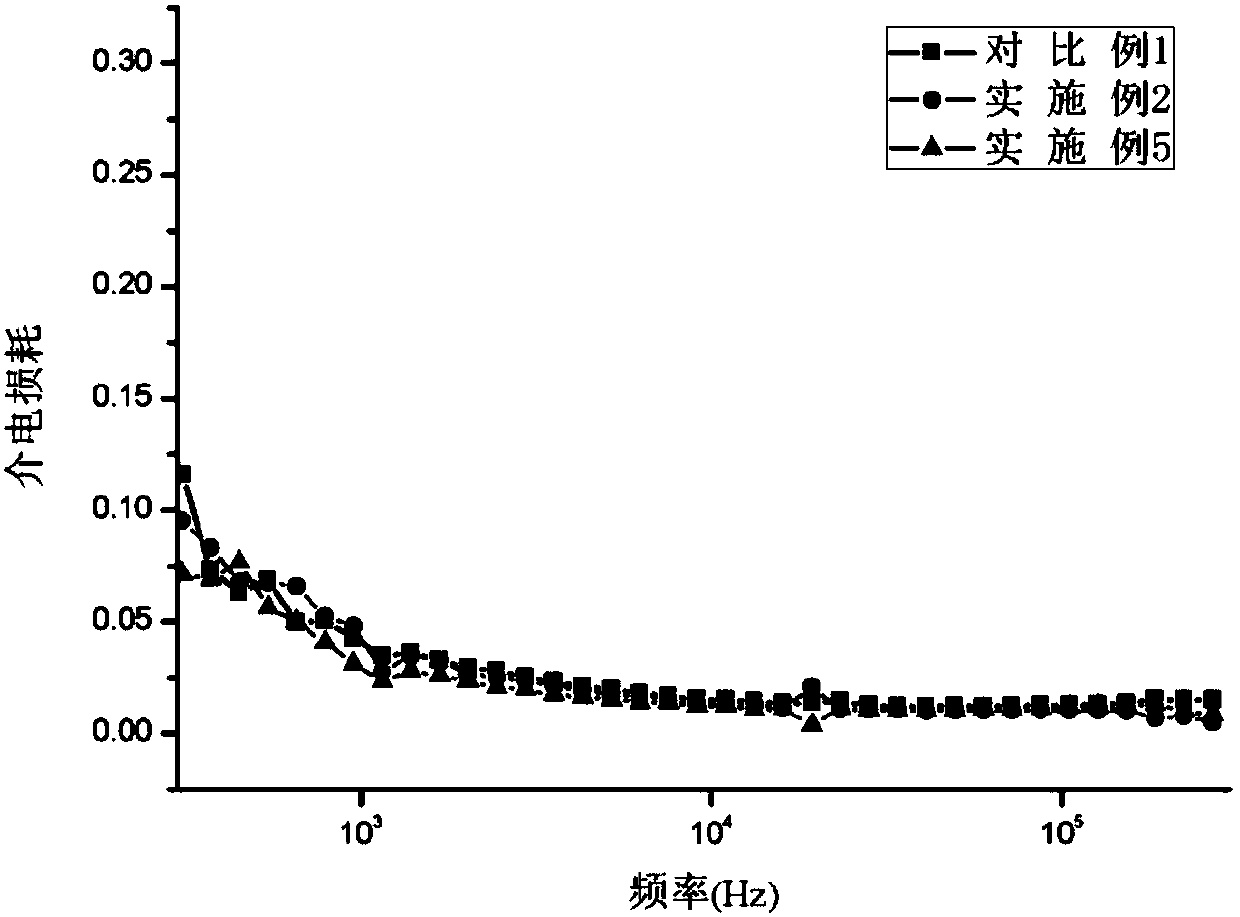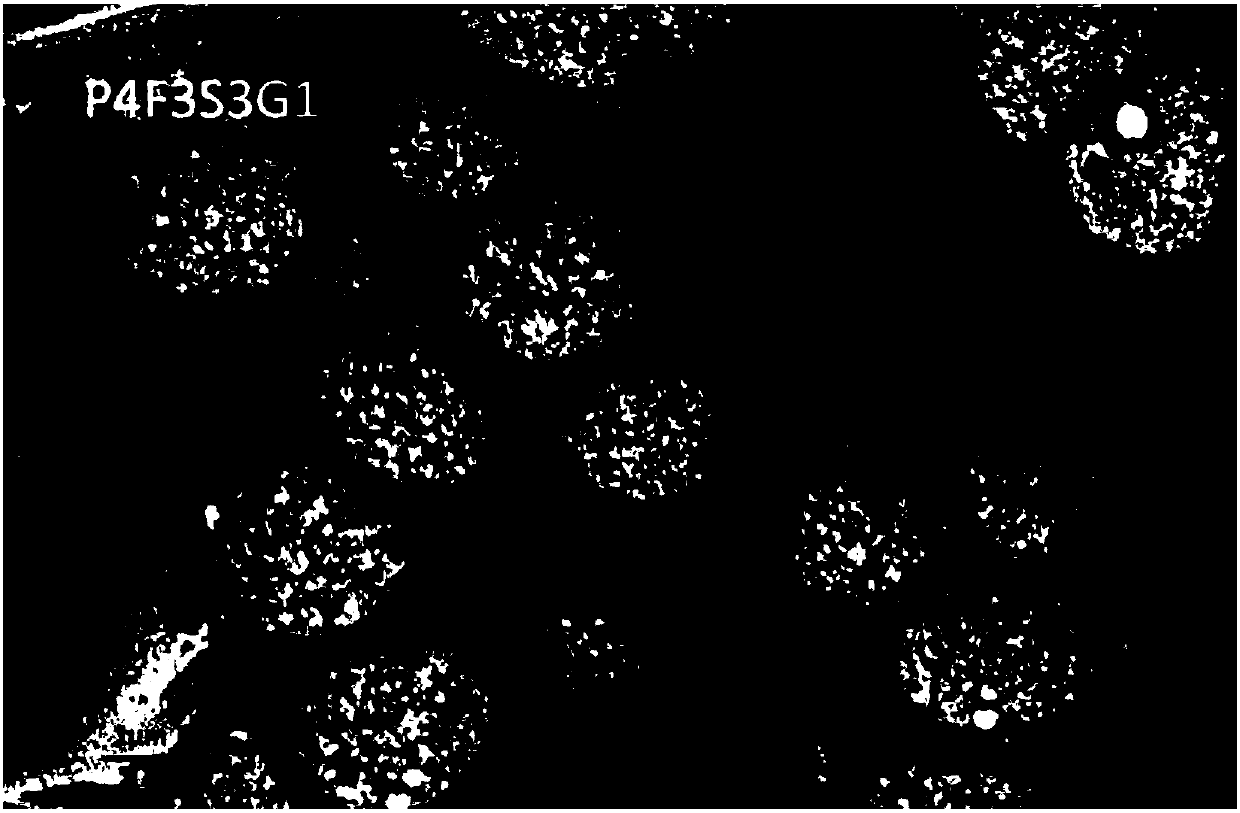Carbon-based dielectric elastomer based on core-shell dynamic vulcanization and preparation method
A dielectric elastomer and dynamic vulcanization technology, which is applied in the fields of carbon-based conductive filler/thermoplastic elastomer composites, carbon-based dielectric elastomers and their preparation, can solve the problems of high dielectric loss and no effective solution, etc. Achieving a high degree of practicality
- Summary
- Abstract
- Description
- Claims
- Application Information
AI Technical Summary
Problems solved by technology
Method used
Image
Examples
Embodiment 1
[0068] Polyvinylidene fluoride was selected as the matrix resin (502, Lichang, Guangzhou), silicone rubber was used as general foundation silicone rubber (KE571‐U, Shin-Etsu, Japan), and fluorine rubber (F2463, Zhonghao Chenguang Chemical Research Institute). Graphene oxide (0.25g) was ultrasonically dispersed in THF for 2h to obtain a graphene oxide suspension;
[0069] Dissolve silicone rubber (15g) in graphene oxide suspension, and disperse evenly by ultrasonication for 2h; evaporate the solvent to dryness at 80°C, and reduce graphene oxide to graphene at 400°C to obtain a graphene / silicone rubber blend thing;
[0070] On an open mill, fluorine rubber (15g), magnesium oxide (0.75g), calcium hydroxide (0.75g) were mixed for 6 minutes to obtain a uniformly mixed fluorine rubber compound;
[0071] Add polyvinylidene fluoride (20g) to a Haake torque rheometer with a temperature of 180°C and a rotor speed of 90r / min to completely melt and plasticize the fluoroplastic; add graph...
Embodiment 2
[0074] Polyvinylidene fluoride was selected as the matrix resin (502, Lichang, Guangzhou), silicone rubber was used as general foundation silicone rubber (KE571‐U, Shin-Etsu, Japan), and fluorine rubber (F2463, Zhonghao Chenguang Chemical Research Institute).
[0075] Graphene oxide (0.5g) was ultrasonically dispersed in tetrahydrofuran for 2h to obtain a graphene oxide suspension; silicon rubber (15g) was dissolved in the graphene oxide suspension, and ultrasonically dispersed for 2h; the solvent was evaporated to dryness at 100°C, Reducing graphene oxide to graphene at 300°C to prepare a graphene / silicone rubber blend;
[0076] On an open mill, mix fluororubber (15g), magnesium oxide (0.75g), and calcium hydroxide (0.75g) for 6 minutes to obtain a uniformly mixed fluororubber compound; polyvinylidene fluoride (20g ) into the Haake torque rheometer with a temperature of 180°C and a rotor speed of 100r / min to completely melt and plasticize the fluoroplastic; add graphene / silic...
Embodiment 3
[0079] Polyvinylidene fluoride was selected as the matrix resin (502, Lichang, Guangzhou), silicone rubber was used as general foundation silicone rubber (KE571‐U, Shin-Etsu, Japan), and fluorine rubber (F2463, Zhonghao Chenguang Chemical Research Institute).
[0080] Graphene oxide (0.75g) was ultrasonically dispersed in tetrahydrofuran for 2h to obtain a graphene oxide suspension; silicon rubber (15g) was dissolved in the graphene oxide suspension, and ultrasonically dispersed for 2h; the solvent was evaporated to dryness at 60°C, Reducing graphene oxide to graphene at 150°C to prepare a graphene / silicone rubber blend;
[0081] On an open mill, mix fluororubber (15g), magnesium oxide (0.75g), and calcium hydroxide (0.75g) for 6 minutes to obtain a uniformly mixed fluororubber compound; polyvinylidene fluoride (20g ) into the Haake torque rheometer with a temperature of 180°C and a rotor speed of 110r / min to completely melt and plasticize the fluoroplastic; add graphene / silic...
PUM
| Property | Measurement | Unit |
|---|---|---|
| dielectric loss | aaaaa | aaaaa |
Abstract
Description
Claims
Application Information
 Login to View More
Login to View More - R&D
- Intellectual Property
- Life Sciences
- Materials
- Tech Scout
- Unparalleled Data Quality
- Higher Quality Content
- 60% Fewer Hallucinations
Browse by: Latest US Patents, China's latest patents, Technical Efficacy Thesaurus, Application Domain, Technology Topic, Popular Technical Reports.
© 2025 PatSnap. All rights reserved.Legal|Privacy policy|Modern Slavery Act Transparency Statement|Sitemap|About US| Contact US: help@patsnap.com



